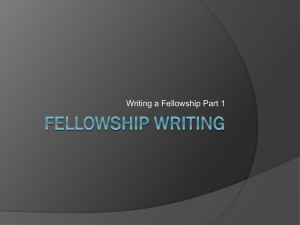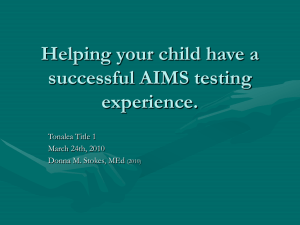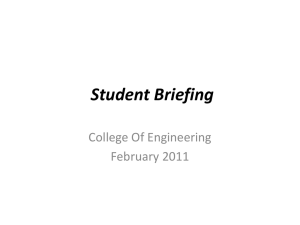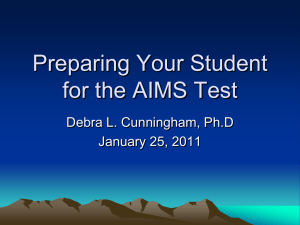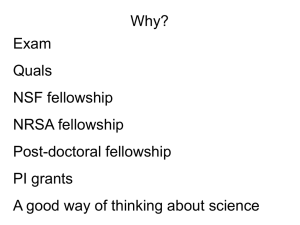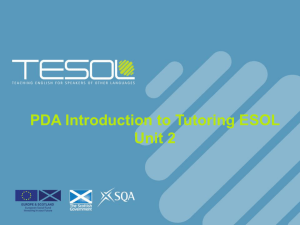Hypothesis and specific aims
advertisement
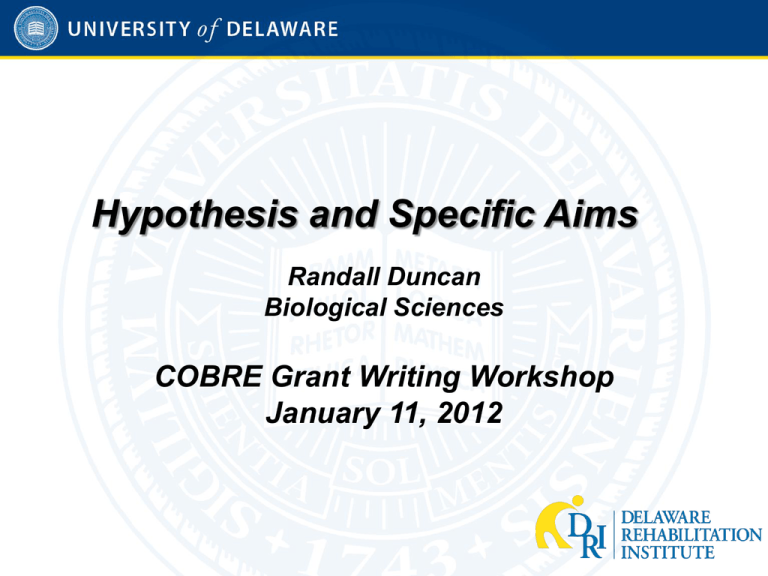
Hypothesis and Specific Aims Randall Duncan Biological Sciences COBRE Grant Writing Workshop January 11, 2012 How to get that first NIH grant No specific aims New Investigator Weak scientific background No experimental description or concept No Preliminary data No Grant!!! Poorly defined methods 1 General comments • A good idea is critical, but not enough. Roughly 80% of proposals submitted to NIH are reasonably good ideas that will yield important knowledge. • Excellent grant writers often claim they can get any reasonable idea funded. • A poorly written grant will never be funded, even if it’s the best idea in the world. 2 General Comments There is a simple secret to writing successful grants that all the best grant writers follow, . . . but the vast majority of applicants do not. It’s the 1st page of the grant: The Specific Aims 3 There’s lots of excellent science out there. What makes for an excellent grant? • A compelling question • Clarity of thought and expression • A strong, testable hypothesis • Logical steps (aims) to answer the question • Rigorous experiments to answer the question 4 The Essential Parts of the Grant: Abstract Hypothesis / Specific Aims This is the key Significance / Innovation Research Design 5 Hypothesis and specific aims: The first “make or break” point • Defines the question to be answered • The reviewer’s first major encounter with your ideas and thought processes – Experienced reviewers can assign a 85% accurate score just by reading this page • Only page most panel member read (remember they all get a vote) 6 The 1st page should contain the essence of the entire proposal Must address the following: • What is the problem? • Which aspect of this problem will you solve? • How will you solve it? • When you are done, what will we know and why is it important to solving the problem? 7 What is the problem? 1-2 paragraphs - Definition of the problem and rationale Which aspect of this problem will you solve? Clear, unambiguous, testable hypotheses How will you solve it? - Specific Aims to include general methods When you’re done, what will we know and why is it important to solving the problem - Close the loop 8 Hypothesis and specific aims: The first “make or break” point • First impressions count Failure here can “lose the reviewer”, regardless of the quality of your experiments! • Good hypotheses and aims lead to good experiments Write your aims and hypotheses first!!! 9 Hypothesis and specific aims: The first “make or break” point • Where do you start? - with a good idea. (chalk talks, colleagues) • How do you know if your idea is good? – Why do we need to know this? (Scientifically important?) – Is it clinically relevant? – This is the NIH 10 Hypothesis and specific aims: The first “make or break” point • Be brutally honest with yourself. “The first principle is that you must not fool yourself, and you’re the easiest person to fool.” Richard Feynman, Nobel Laureate • Get other opinions. – Chalk talks/colleagues input 11 What is a good hypothesis? Logical - based on solid observations or experimental data Testable Focused (no fishing) Informative – interesting and new, not trivial or predictable Simple – “The number of entities used to explain phenomena should not be increased unnecessarily” (Occam’s Razor) Translation: Offer the simplest explanation consistent with the data 12 Is a hypothesis always needed? No – Bioengineering/other technology Developmental type grants Clinical Trials But, all grants need well defined objectives 13 Specific Aims Describe the general research steps by which you will test your hypotheses. Each aim should logically follow the major hypotheses Follow each aim with a brief description of the experimental design (2-3 sentences). 14 Do’s and Don’t’s Limit Specific Aims to one page – required. Formulate no more than four specific aims. Too many aims makes the grant overly ambitious. Draft and complete the SA page as the first task!!! Common mistake! Start early (6 months before deadline) 15 Do’s and Don’t’s Avoid “serial” or “contingent” aims. The aims shouldn’t be dependent on one another. If the first one fails, why give the grant. Too many aims. First words are important. Be active. “Determine, Define, Ascertain” good “Examine, describe, measure” not so good Vague goals/objectives 16


